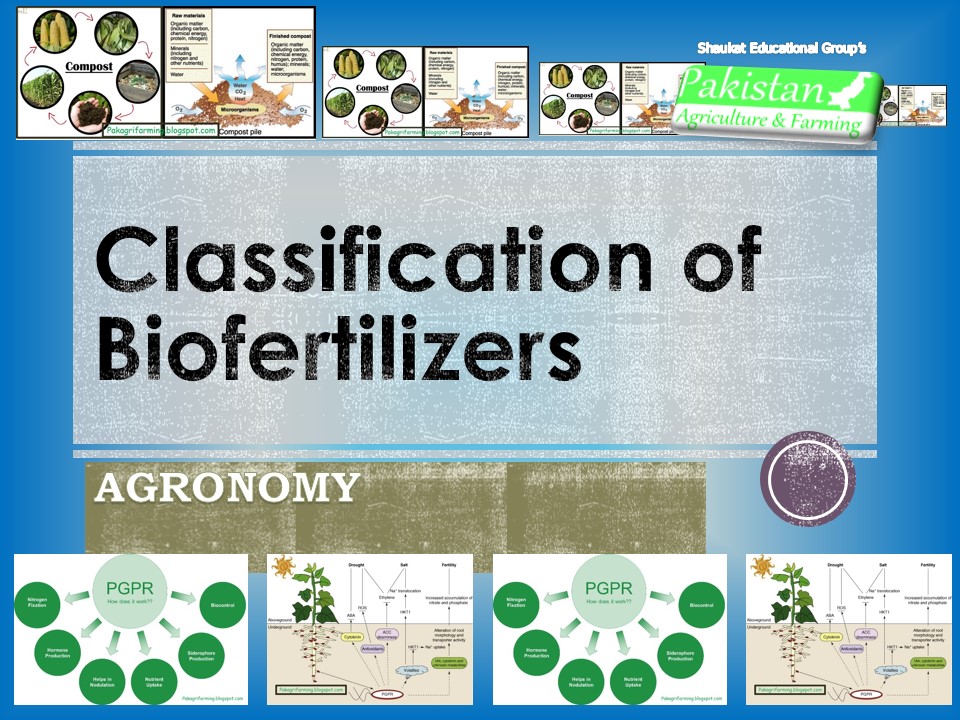Types of Biofertilizers

Biofertilizers are classified based on the types of microorganisms they contain and their role in enhancing plant nutrition. The main types of biofertilizers include:
Nitrogen-Fixing Biofertilizers:
Rhizobium: This bacterium forms symbiotic associations with the roots of leguminous plants (such as peas, beans, and clover) and fixes atmospheric nitrogen into a form that plants can use.
Azotobacter: Free-living nitrogen-fixing bacteria that are beneficial for non-leguminous plants. They enhance nitrogen availability in the soil by converting atmospheric nitrogen into ammonia.
Azospirillum: A genus of nitrogen-fixing bacteria that establishes a symbiotic relationship with the roots of certain grasses and cereals, helping in nitrogen fixation.
Phosphate-Solubilizing Biofertilizers:
Phosphate-solubilizing bacteria: These bacteria solubilize inorganic phosphates in the soil, making them more available to plants. Examples include Bacillus and Pseudomonas species.
Mycorrhizal Fungi: These fungi form mutualistic associations with plant roots, aiding in the solubilization and uptake of phosphates. Arbuscular mycorrhizal fungi (AMF) are commonly used in biofertilizers.
Potassium-Mobilizing Biofertilizers:
Sulfur-Oxidizing Biofertilizers:
Zinc-Solubilizing Biofertilizers:
Growth-Promoting Biofertilizers:
Algae-based Biofertilizers:
Compost Biofertilizers:
It's important to note that the efficacy of biofertilizers can vary depending on factors such as soil conditions, climate, and crop species. Integrated nutrient management practices often involve the combined use of biofertilizers with organic and inorganic fertilizers to achieve optimal results in sustainable agriculture.
Thank you.